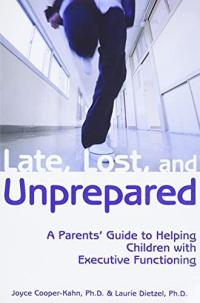What is executive function?
Our brains use a powerful set of cognitive tools to plan, organize, monitor, remember, and control our behavior and thoughts. Executive function (EF) is the umbrella term used to describe the set of cognitive skills used flexibly to direct goal-oriented behavior in new or unfamiliar situations (Anderson, 2002). Executive functions or executive skills (Cartwright, 2023) are the mental tools that allow us to organize and manage goal-directed tasks.
We use executive functions to manage and regulate our thinking, feelings, and behaviors. For example, we use executive functions to do the following:
- Concentrate and pay attention
- Plan and remember the steps needed in tasks
- Solve problems and think creatively
Although there are several mental skills that fall under EF, three have been studied that influence critical thinking skills (Diamond, 2013): working memory, cognitive flexibility, and inhibitory control.
Learn more about what executive functions are and how they develop in children in the video below.
Working memory
Working memory is where information is stored and used temporarily. Our brains have limits on how much information we can store in working memory. Most people can work with 4-5 new things at a time. Working memory allows students to hold and manipulate information in their minds as they navigate words, sentences, and paragraphs. Working memory is thought to be “fixed,” meaning we can’t expand working memory through instruction or practice. However, we can teach students strategies for getting the most out of their working memory — one example is “chunking” information.
Cognitive flexibility
Cognitive flexibility means our thinking can be creative or open to changes based on the situation or constraints. Having empathy, taking other perspectives, or engaging in a creative thinking all require cognitive flexibility. Reading fiction and considering character motives and traits or using written response to show another perspective are ways to increase cognitive flexibility.
Inhibitory control
Inhibitory control is what keeps us from making impulsive decisions, delaying gratification, and/or resisting temptations. Our brains use inhibitory control to manage our attention, behavior, emotions, and thoughts. Inhibitory control can be taught, but it requires sustained practice of “if-then” planning, self-discipline, stress reduction, and concentration techniques. Having self-control helps student to develop stamina and persist in reading, even when encountering unfamiliar words or breakdowns in understanding.
How to support executive function skills in the classroom
Although this area is not widely understood, teachers can use evidence-based reading practices to promote executive function and reading. The chart below provides some examples.
| Before Reading |
|
|---|---|
| During Reading |
|
| After Reading |
|
| Chunking |
|
| Mnemonics |
|
| Scaffolding |
|
| Feedback |
|
Clinical child psychologist Dr. Joyce Cooper-Kahn provides tips for setting up an “executive function-friendly” classroom in the video below. See our full interview with Dr. Cooper-Kahn
Especially for parents
Watch neuroscientist Dr. Adele Diamond explain how families can support executive functions.
Learn more about executive function
Executive Function
Executive Function Fact Sheet
Shanahan on Literacy
How Do We Teach Executive Function in Reading?
Executive Function
Helping Children with Executive Functioning Problems Turn In Their Homework
Autism Spectrum Disorder
Exploring Theory of Mind, Weak Central Cohesion, and Executive Functioning in ASD
Literacy and Education Organization
Mind in the Making
A project that promotes the development of seven essential life skills in children, including executive function.
Books about executive function

Executive Skills and Reading Comprehension: A Guide for Educators
Children with traumatic brain injury (TBI)
A traumatic brain injury — even a milder one like a concussion — has a significant impact on a child returning to school after their injury. Problems with executive functioning are common. Sometimes a student’s TBI goes undiagnosed or is misdiagnosed as a learning disability or behavioral problem.
On our sister site, BrainLine, learn more about TBIs in children, returning to school after an injury, IEPs and accommodations, and additional resources for parents and educators.







